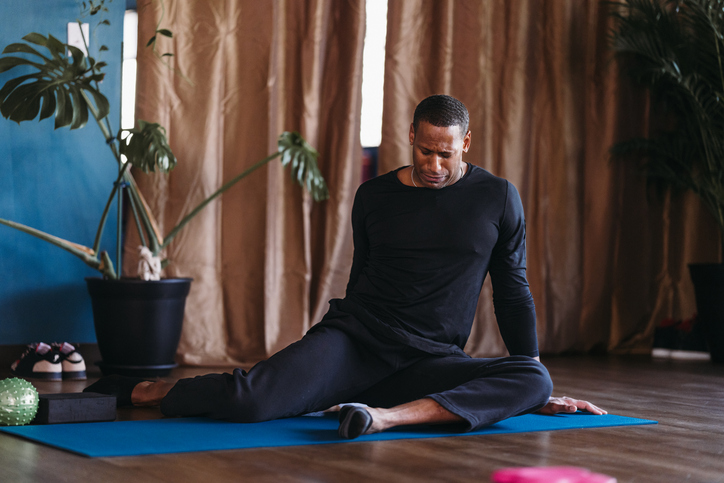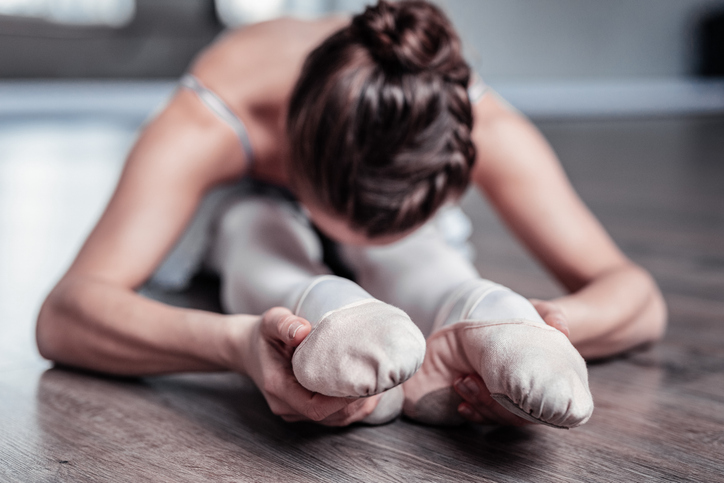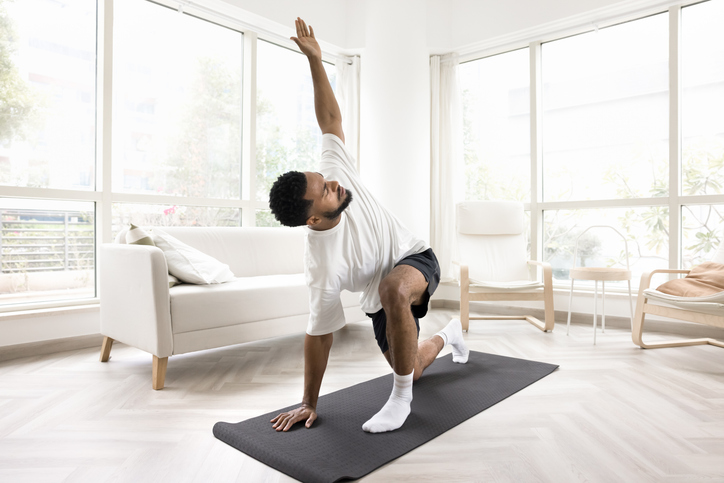You already know that stretching is vital. It improves flexibility and mobility (one of many key parts of health) and reduces the chance of harm. And should you don’t stretch, the muscle tissue can shorten and grow to be tight, which might restrict your vary of movement and put you in danger for joint ache or a pulled muscle.
However stretching is just helpful if it’s finished appropriately. There are a couple of widespread stretching errors that may result in the precise reverse of what you’re on the lookout for, comparable to harm and inflexibility. Listed here are eight pitfalls to keep away from so you possibly can enhance your flexibility and your exercises.
1. You’re Doing the Unsuitable Kind of Stretching

There are two foremost forms of stretching: static and dynamic. Static stretching is what you in all probability bear in mind from gymnasium class: regularly stretching a muscle and holding a pose for about 30 seconds. Whereas this can be a nice strategy to quiet down from a exercise or enhance common flexibility, analysis means that static stretching earlier than a energy exercise may very well trigger a lower in efficiency.
“Throughout a warm-up, you need to do dynamic stretching, which reinforces muscle activation and prepares muscle tissue to be highly effective by means of a full vary of movement,†says Trevor Thieme, CSCS. Dynamic stretches embody lunges, trunk rotations, leg swings, and leaping rope.
For the post-exercise “cool-down†interval, you possibly can concentrate on static stretching to calm down the muscle tissue and launch stress. “Each forms of stretching might help improve mobility,†Thieme says. “However one excites muscle tissue whereas the opposite calms them down.â€
2. You’re Bouncing Whereas Stretching
Utilizing momentum from bouncing to pressure a muscle to stretch previous its regular vary (a.ok.a. ballistic stretching) could really feel prefer it’s serving to you enhance your vary of movement. However as a substitute of loosening the muscle, such a speedy stretching motion can really trigger the muscle tissue to tighten — a contraction often known as the myotatic reflex or “stretch reflex.†This may result in accidents like muscle or tendon tears, Thieme says.
3. You’re Stretching Injured Muscle tissues
Stretching injured muscle tissue is “an enormous no-no,†Thieme warns. Muscle strains sometimes occur when a muscle is stretched past its restrict, so stretching it additional can irritate the harm. As an alternative, use the POLICE protocol (safety, optimum loading, ice, compression, and elevation) to assist the muscle heal.
4. You’re Overstretching

Whereas some discomfort is to be anticipated, you need to by no means be in ache whereas stretching. “Overstretching may end up in muscle strains or extreme neural stress [stretching of the nerves],†says Lindsay Sudell, MOT, OTR/L, CFSS-3, CPT of Merely Stretch LA.
Overstretching may also result in hypermobility, “which is when a joint is just too free and thus unstable,†Thieme says. Know your limits while you’re stretching, and don’t pressure your self to transcend them.
5. You’re Not Stretching Constantly
It’s going to take quite a lot of sporadic stretching classes to attain the pliability of a gymnast. Ideally, your stretching classes ought to be reasonable and frequent slightly than intense and occasional.
“So as to obtain bodily, everlasting change, stretching should be constant for six to eight weeks,†says Sudell.
6. You’re Rushing By way of Your Stretches
“Individuals typically don’t stretch for the suitable length of time,†explains Sudell. She recommends aiming for 30 seconds or much less for pre-exercise stretches. For post-workout static stretching, purpose to carry every stretch for at the very least 60 seconds.
7. You’re Not Doing Sport-Particular Stretches

Sport-specific stretches “may be something focused towards actions {that a} explicit athlete wants,†Sudell says. For instance, she says, golfers could concentrate on stretches that enhance their spinal rotation and hip mobility, to allow them to hit the ball with maximal energy. Sprinters can heat up with dynamic stretches that simulate working and explosive actions, like strolling lunges, butt kicks, and excessive knees.
Analysis additionally reveals that static stretches are higher suited to athletes who want flexibility (like gymnasts or dancers), whereas dynamic stretches are particularly helpful for many who must run or soar (like basketball gamers or runners).
8. You’re Ignoring Your Respiration
Deep, diaphragmatic respiration “might help calm down tense muscle tissue, and when paired with stretching, can enable for a good deeper stretch with out rising the chance of harm,†Thieme says.
As well as, respiration enhances the therapeutic impact of stretching, Sudell says. Analysis reveals that diaphragmatic respiration can assist the physique get better after an intense exercise. The correct strategy to breathe throughout a stretch is to slowly inhale by means of the nostril, maintain for a second, then launch the breath by means of both the mouth or nostril, retaining the diaphragm and stomach gentle and relaxed.

